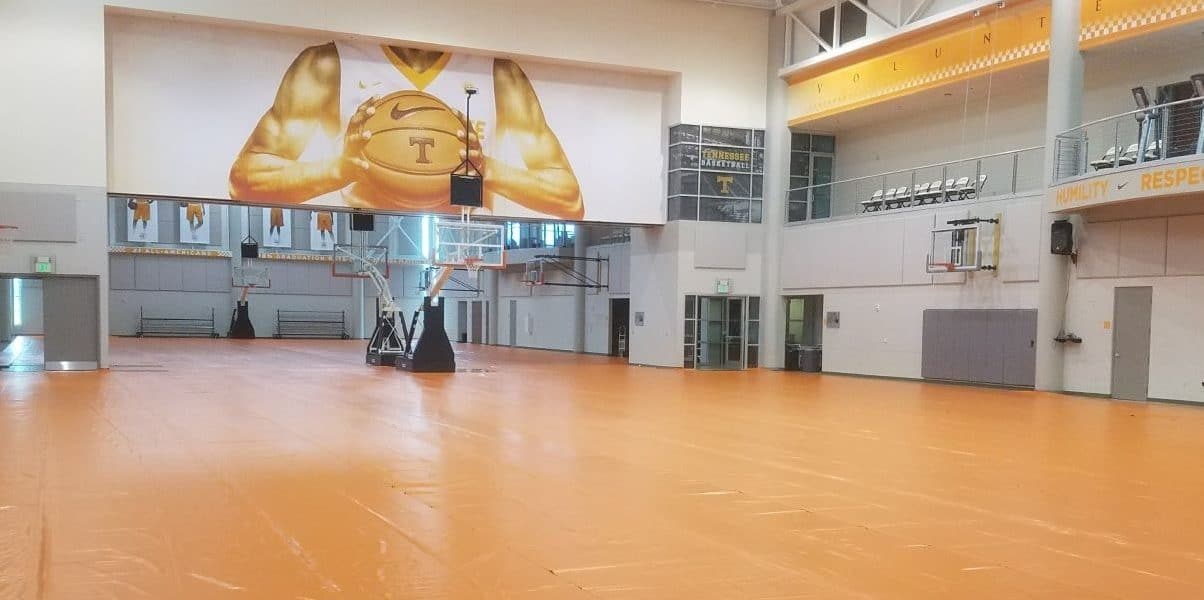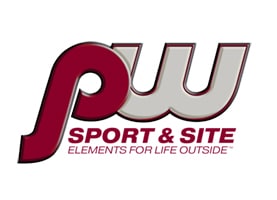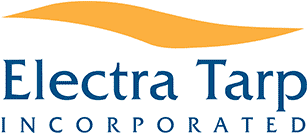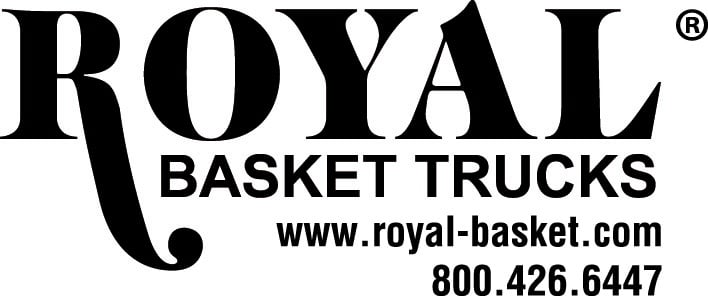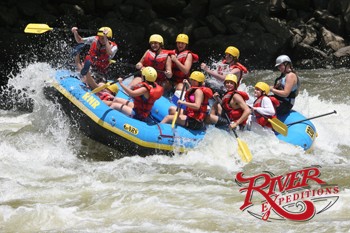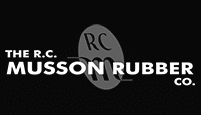A gymnasium floor is a major expense for any church, typically costing $50,000-$100,000. Athletes and coaches generally prefer maple hardwood flooring with a shock-absorbing subflooring. However, in addition to its initial cost, hardwood flooring requires regular cleaning and maintenance to retain its professional appearance.
Gym floor manufacturers and refinishers recommend that you only allow appropriate athletic footwear on the floor to minimize damage…but most gymnasiums are multipurpose facilities.
What can be done to protect your investment during non-athletic use? A premium quality gym floor cover can keep the floor looking good, reduce maintenance costs, improve safety and create an attractive space that can be used for other purposes.
What Can Happen to a Gymnasium Floor?
A whole host of risks come along with using the gym for special events. Wood flooring can be scuffed and scraped by heels and street shoes. Furniture such as tables and chairs will likely be used and can potentially cause even more damage. Food and drinks might be served, coming with a risk of spills.
Even during athletic use, gym floors can become damaged by heavy equipment, team benches, scoring tables and sideline seating. Spectators or organizers may be wearing hard-soled footwear as they walk around the edges of the floor.
Maple flooring can also be damaged by improper cleaning and maintenance. Harsh chemical cleaners can wreck a hardwood floor, as can automatic floor scrubbers and the overuse of water. For this reason, as well as the cost, it is best to limit the amount of maintenance and cleaning that needs to be performed on the floor.
Reasons to Use a Gym Floor Cover
Covering the floor during non-athletic use is an obvious way to avoid most damage from improper use, but does it make financial sense?
Gym Floor Maintenance: Time and Cost
Even with daily cleaning and careful use, gym floors require regular maintenance. Annual re-coating is recommended, with more frequent treatments for floors that see heavy daily use. Experts recommend that you completely sand, reseal, repaint and refinish a gym floor every 5-10 years, depending on the amount of use and, predictably, whether or not the floor is covered during non-athletic use.
The average cost of sanding and refinishing a gym floor (materials, labor and painting) is $3.00 per square foot. For a 5,000-square-foot gymnasium, this adds up to $15,000. In terms of time, a coat of finish can take as long as 7 days to fully cure. The whole process of sanding and refinishing a floor usually takes 3 to 4 weeks. That’s a long time for your gym to be out of commission.
What’s more, a gym floor doesn’t last forever. The Maple Flooring Manufacturer’s Association (MFMA) says that the thickest grade of properly maintained maple flooring can only withstand up to 10 sandings before a new floor must be installed. Keeping your gym floor in good condition will reduce maintenance and increase its lifespan.
Gymnasiums Are Multi-Purpose
Is your gym regularly used for activities other than sports? In these times of heavy foot traffic, a wooden gym floor that was designed for sneakers can be overrun by destructive heels and street shoes. Scuffing, denting and scraping from tables, chairs and other furnishings can also cause significant damage. Using a gym floor cover for these special events will greatly minimize damage.
Gym Covers Save Time Now
Standard vinyl gym floor covers are made to be everything that a beautiful maple hardwood floor isn’t — stain, abrasion, and tear resistant, as well as low maintenance. What would the point be otherwise?
Less obvious, though, is that these attributes offset the time and effort of utilizing a cover system on a day-to-day basis. A large system can take two people 20 or 30 minutes to put down and take up. But cleanup and maintenance time following any event will be drastically reduced. The use of a stain and abrasion resistant covering means daily effort is both lower and more predictable.
Carpeted Gym Floor Covers Can Improve Acoustics
Gymnasiums are notoriously poor acoustical spaces. All surfaces are generally hard, causing sounds to bounce in unpleasant ways given the non-acoustical nature of gymnasium design priorities.
Without some effort to remedy this issue, a gymnasium will be a very unpleasant venue for audience members at events where sound is key. A sound-absorbing carpet floor covering, available as easy-to-install tiles, remedy this by greatly reducing reverberation, making it more suitable.
Gym Coverings Provide Enhanced Safety
While vinyl gym floor covers of all types tend to be more slip-resistant than finished hardwood, higher end styles are optionally available with non-slip textures and patterns. These offer additional precaution against slip and fall accidents, should the floor surface become wet. Installing a non-slip gym floor cover for public events can reduce the risk of injury and potential liability.
Materials Are Purpose Formulated
Today’s gym floor coverings, coated with material such as PVC polyester mesh, are extremely durable, fire retardant, waterproof, rot and mildew resistant, anti-fungal and anti-bacterial. This means that you won’t put your cover away one day and find it unusable or in desperate need of cleaning when you get it out again months down the road.
This information is courtesy of CoverSports, which offers a wide selection of top-quality gym floor covers and accessories, www.coversports.com.


